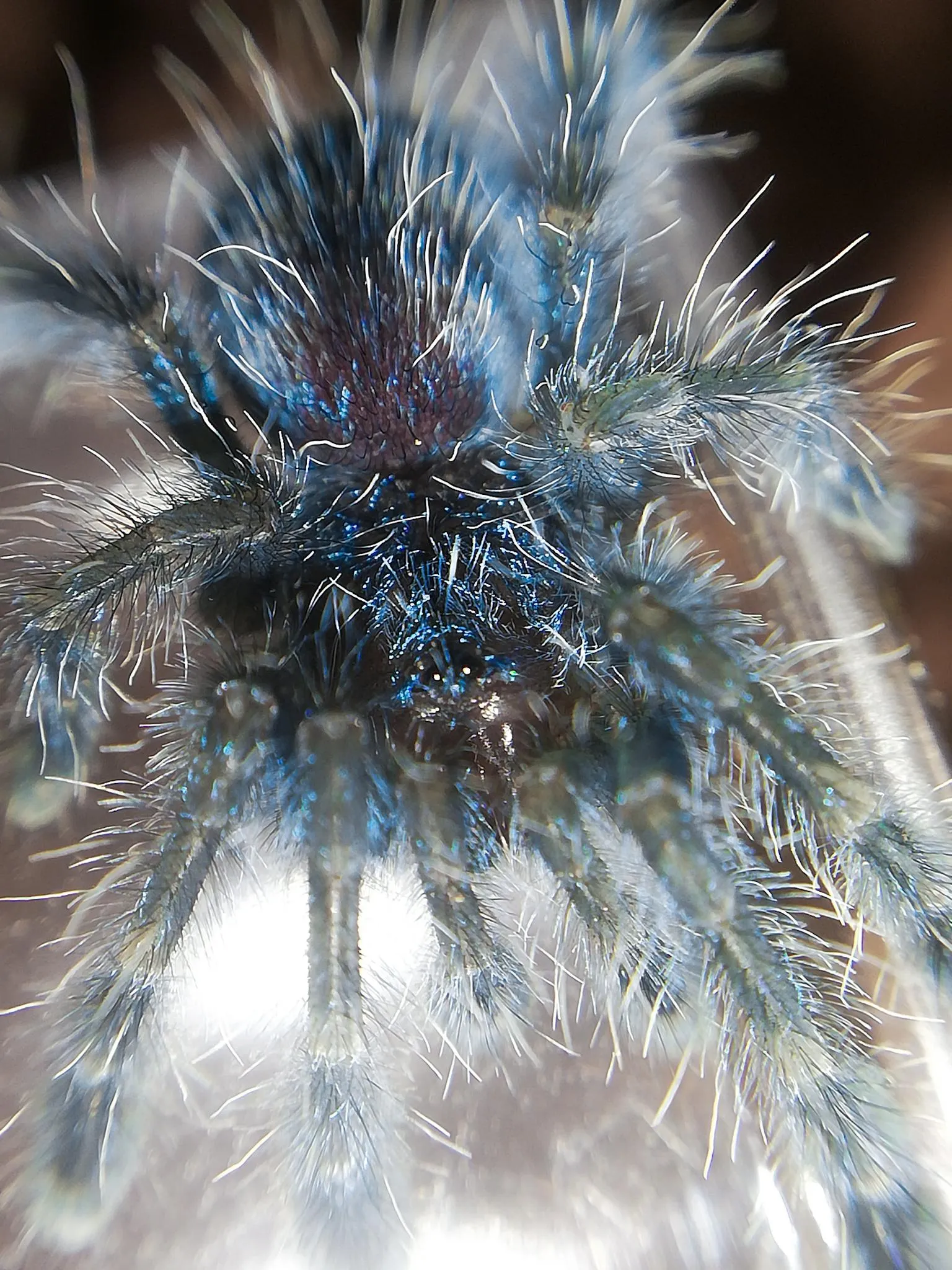Versicolour Tarantula [Top 5] Facts
The Versicolour Tarantula, scientifically known as Caribena versicolor, is a stunning and popular species among tarantula enthusiasts. Native to the Caribbean, particularly Martinique, this arboreal tarantula is known for its vibrant colors and relatively docile temperament. This guide will provide you with essential information about this captivating arachnid, covering everything from its appearance and habitat to its care requirements. Whether you’re a seasoned tarantula keeper or a curious beginner, understanding the Versicolour Tarantula is key to appreciating and successfully keeping this beautiful creature. In the following sections, we will explore five fascinating facts and practical care tips to help you provide the best possible environment for your Versicolour Tarantula.
Appearance and Identification
One of the most captivating aspects of the Versicolour Tarantula is its striking appearance. Juvenile tarantulas exhibit a vibrant color palette, often showcasing iridescent blues, greens, and purples on their carapace, legs, and abdomen. This striking coloration gradually fades as the tarantula matures, but the adult tarantula retains a beautiful coloration, making it a visual delight for any observer. Identifying this species is relatively straightforward due to its unique color pattern and arboreal nature, setting it apart from many other tarantula species. When looking at this beautiful arachnid, it’s like looking at a living piece of art, making it a unique and captivating addition to any collection.
Distinctive Coloration
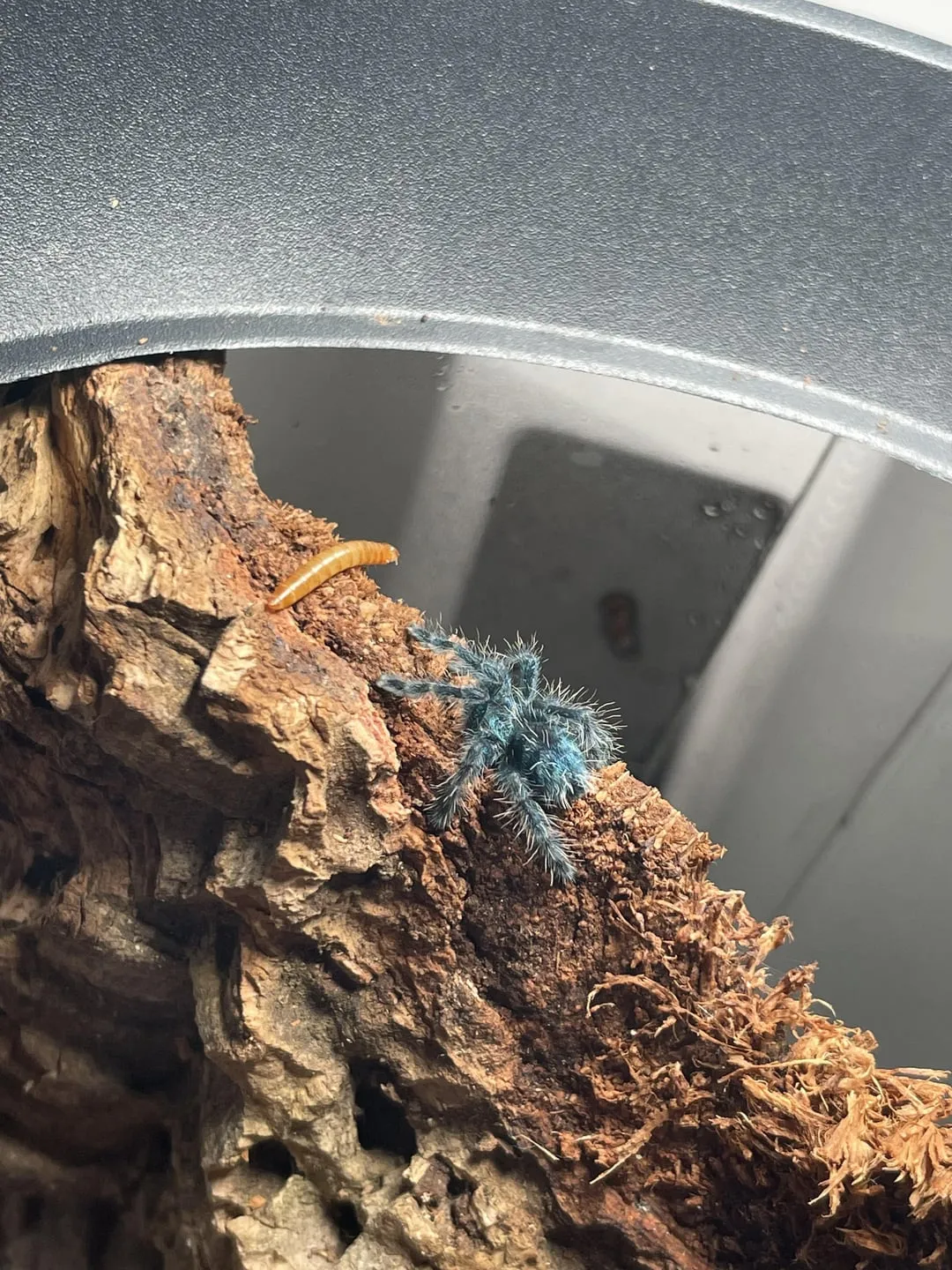
The vivid colors of the Versicolour Tarantula are a key identifying factor. The intense blues and greens often seen on juvenile specimens gradually transition to more muted shades in adults, but the underlying iridescence remains. This color change is a natural part of the tarantula’s development, and it doesn’t diminish the beauty of the species. Proper lighting can enhance the display of colors, making it a visually rewarding pet. The colors aren’t just aesthetic, as they can play a role in camouflage within their natural habitat, helping them blend with the foliage of their arboreal environment. The vibrant colours truly set it apart from other tarantulas.
Size and Characteristics
Versicolour Tarantulas are a medium-sized tarantula species. Adult females typically reach a leg span of up to 6 inches (15 cm), while males are usually smaller. They have a slender build and are well-adapted to climbing, with strong legs and claws. These tarantulas are known for their relatively docile temperament, making them a good choice for those new to keeping arboreal species. However, it’s essential to handle them with care and respect their natural behaviors. Their overall size and manageable temperament contribute to their popularity as pets, making them a fascinating and captivating choice for tarantula enthusiasts.
Natural Habitat and Distribution
The Versicolour Tarantula is native to the Caribbean island of Martinique. In its natural habitat, it lives in a warm, humid environment, typically residing in trees and shrubs. Understanding their natural environment is crucial for providing the right conditions in captivity. These tarantulas are arboreal, meaning they spend most of their time in trees. They build webs amongst the branches, creating a secure place to live and hunt. Replicating this natural setting as closely as possible is essential for the tarantula’s well-being and longevity. Careful consideration of the natural habitat will contribute greatly to your tarantula’s health and happiness.
Where They Live
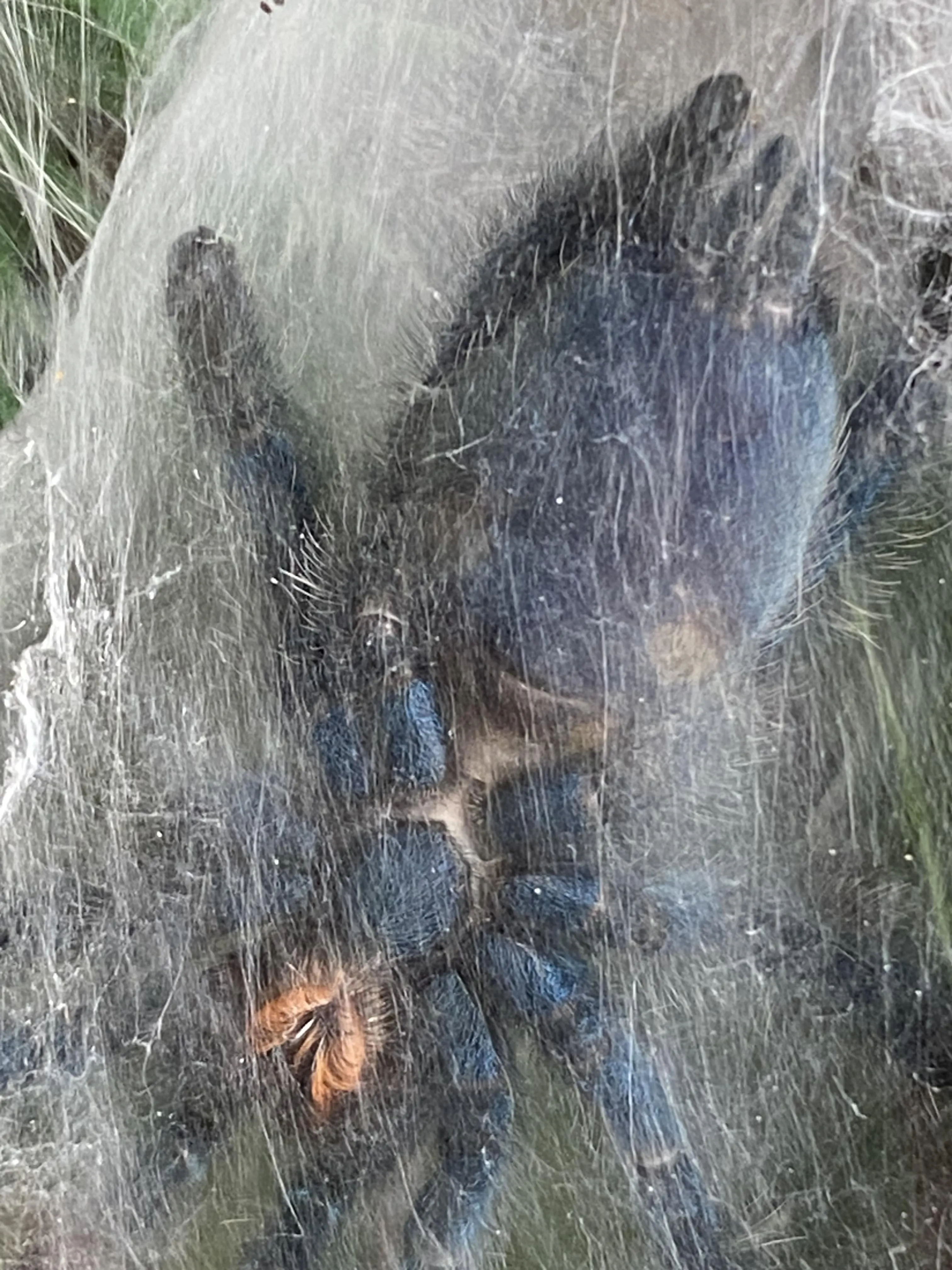
Versicolour Tarantulas live in the lush, tropical forests of Martinique. They are primarily found in trees and shrubs, where they build webs and hunt for prey. This arboreal lifestyle means they require vertical space in their enclosures to climb and thrive. Their natural habitat provides them with shelter from the elements and protection from predators. Replicating this environment through proper enclosure setup is crucial for captive care. These tarantulas have evolved to live in a very specific type of environment, meaning that it’s important to understand the type of environment that they come from.
Ideal Climatic Conditions
The ideal climatic conditions for Versicolour Tarantulas include a warm and humid environment. Temperatures should be maintained between 75°F and 85°F (24°C and 29°C), with humidity levels ranging from 70% to 80%. Regular misting of the enclosure is necessary to maintain these humidity levels, and proper ventilation is important to prevent mold and other health issues. Understanding and maintaining the correct temperature and humidity levels is key to ensuring the health and happiness of your tarantula. Monitoring these conditions regularly with a hygrometer and thermometer will help you create the best living environment for your pet. Keeping the conditions ideal is a must for a happy tarantula.
Versicolour Tarantula Care
Caring for a Versicolour Tarantula involves providing a suitable enclosure, maintaining the correct environmental conditions, and ensuring a proper diet. With the right care, these tarantulas can thrive in captivity, becoming long-lived and fascinating pets. Proper care starts with the enclosure setup, including the substrate, furnishings, temperature, and humidity. Regular feeding with appropriate prey items is also essential, alongside handling the tarantula with care to ensure your safety and that of the spider. Understanding these needs and how to meet them is vital for responsible tarantula ownership and creating a thriving environment.
Enclosure Setup
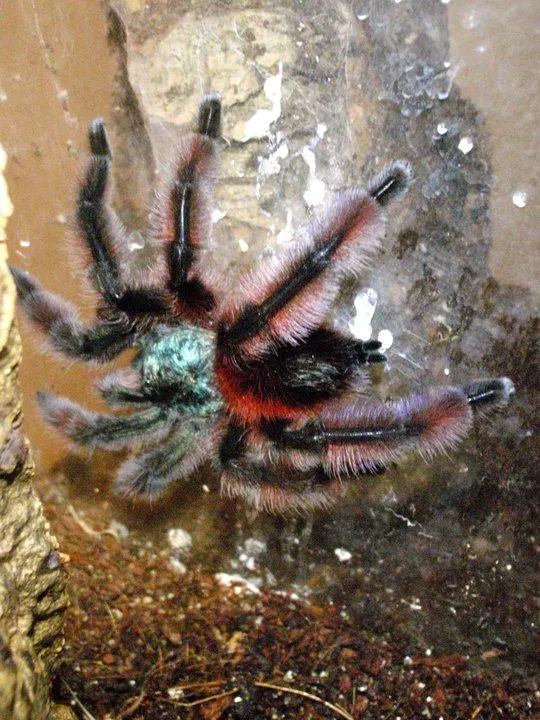
An appropriate enclosure is crucial for the well-being of a Versicolour Tarantula. A tall, arboreal-style enclosure is required, as these tarantulas are climbers. The enclosure should be well-ventilated to prevent the buildup of excess moisture and allow for proper air circulation. The size of the enclosure should be appropriate for the size of the tarantula, with juveniles needing smaller setups and adults requiring more space. The enclosure should include suitable substrate, such as coco coir or peat moss, and provide ample climbing opportunities in the form of branches or artificial plants. The right enclosure setup replicates the natural habitat and promotes healthy behaviors. The right enclosure setup is the key for success.
Substrate and Furnishings
The substrate should be absorbent and able to retain moisture to maintain humidity levels. Coco coir, peat moss, or a mixture of both are good choices. The depth of the substrate should be sufficient to allow the tarantula to burrow if it chooses. Provide plenty of climbing opportunities with sturdy branches, cork bark, and artificial plants. These furnishings not only give the tarantula places to explore, but they also mimic the natural habitat and provide the tarantula with a sense of security. The right combination of substrate and furnishings helps the tarantula feel safe and promotes natural behaviors, which in turn benefits its overall health and well-being.
Temperature and Humidity
Maintaining the correct temperature and humidity is critical for the health of a Versicolour Tarantula. Use a thermometer and hygrometer to monitor the conditions inside the enclosure. The ideal temperature range is between 75°F and 85°F (24°C and 29°C). Humidity levels should be kept between 70% and 80%. Regular misting is necessary to achieve the required humidity, but ensure proper ventilation to prevent mold. If necessary, use a heat source, such as a heat lamp or mat, to maintain the correct temperature, but always ensure that the heat source doesn’t overheat the enclosure. Consistent monitoring is important for the well-being of the spider.
Feeding and Diet
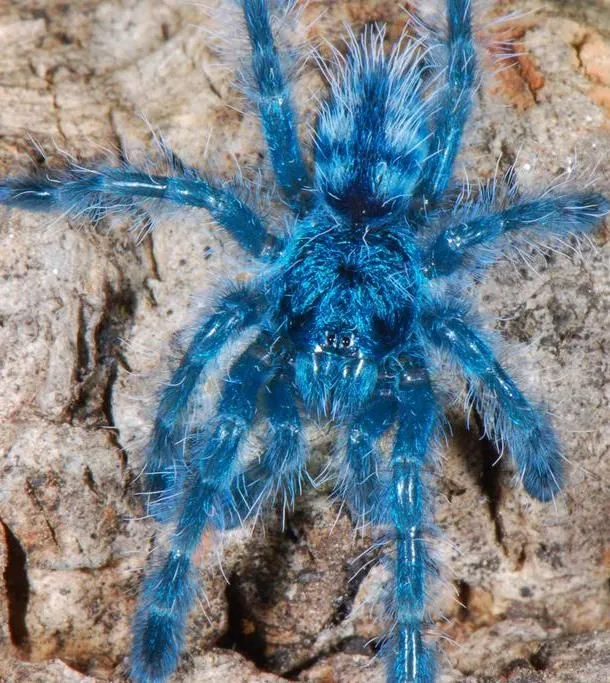
Versicolour Tarantulas are carnivores, so they need a diet that primarily consists of live insects. The type and size of the insects should be appropriate for the size of the tarantula. It is important to feed them regularly, adjusting the frequency based on their age and appetite. Providing a balanced diet ensures the tarantula receives the necessary nutrients for growth and overall health. It’s also important to provide fresh, clean water at all times, ensuring that the tarantula stays hydrated. A proper diet will ensure your spider’s health.
What to Feed
The primary diet for Versicolour Tarantulas should consist of live insects. Appropriate choices include crickets, roaches, and mealworms. The size of the prey should be slightly smaller than the tarantula’s body. Varying the diet can provide a more balanced set of nutrients. Avoid feeding insects that have been exposed to pesticides, as these can be harmful to the tarantula. Always ensure that the insects are alive and active when offered to the tarantula. The right food is key for proper health.
Feeding Frequency
Juvenile Versicolour Tarantulas should be fed more frequently, usually two to three times per week. As they mature, the feeding frequency can be reduced to once a week or every other week. Observe the tarantula’s abdomen to gauge its fullness. An overfed tarantula may refuse food, and a well-fed tarantula will have a slightly rounded abdomen. Always remove any uneaten food within 24 hours to prevent the buildup of mold or mites in the enclosure. Adjusting the feeding schedule based on the tarantula’s age and appetite is crucial for maintaining a healthy specimen.
Handling and Safety
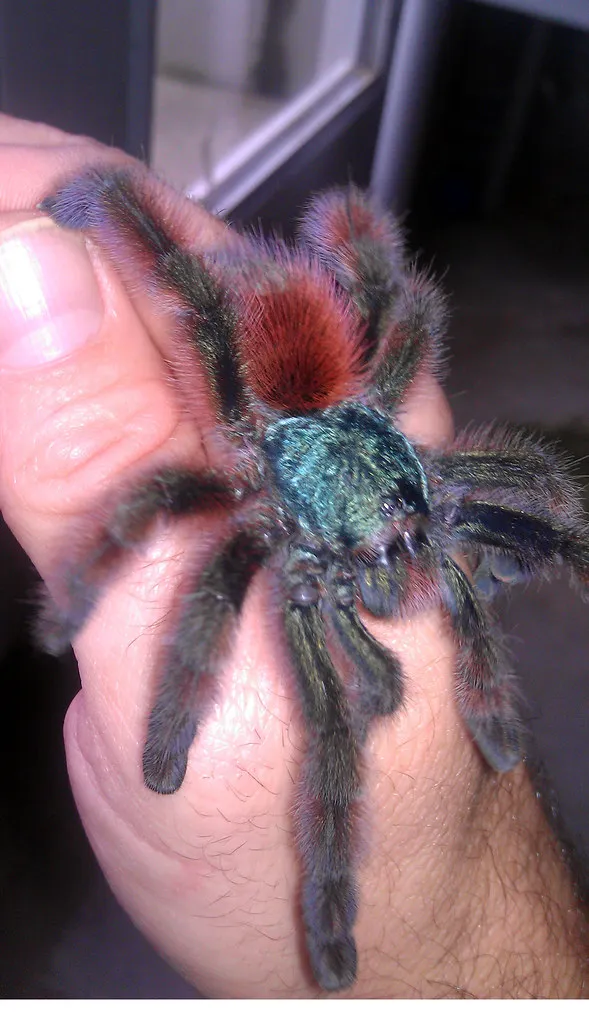
While Versicolour Tarantulas are generally docile, handling them should be approached with caution and respect. Tarantulas can be delicate, and a fall can be fatal. Bites, though uncommon, can be painful. It’s crucial to handle these tarantulas safely to protect yourself and the tarantula. Understanding the behaviors of the tarantula and taking appropriate precautions can help to minimize risks and ensure a safe handling experience. It is important to respect the spider, since mishandling can lead to issues.
Safe Handling Practices
If you choose to handle your Versicolour Tarantula, do so with great care. Avoid handling when the tarantula is molting or shortly after molting, as its exoskeleton is very vulnerable. Always handle the tarantula over a soft surface, such as a bed or a carpet, to minimize the risk of injury if it falls. Handle gently and avoid sudden movements. Wash your hands before and after handling. Do not force the tarantula to come out of its enclosure, and always approach it calmly and slowly. Handling, if done, should be done with care to avoid problems.
Potential Hazards
Versicolour Tarantulas have urticating hairs, which can cause skin irritation if they come into contact with the skin. The bite of a Versicolour Tarantula is not typically life-threatening to humans, but it can be painful and cause local swelling. Always be aware of the tarantula’s behavior and body language. If you are bitten, clean the wound thoroughly and seek medical attention if necessary. Preventative measures such as gentle handling and a calm approach can reduce the chances of being bitten, and it is important to treat the tarantula with caution.
Lifespan and Health
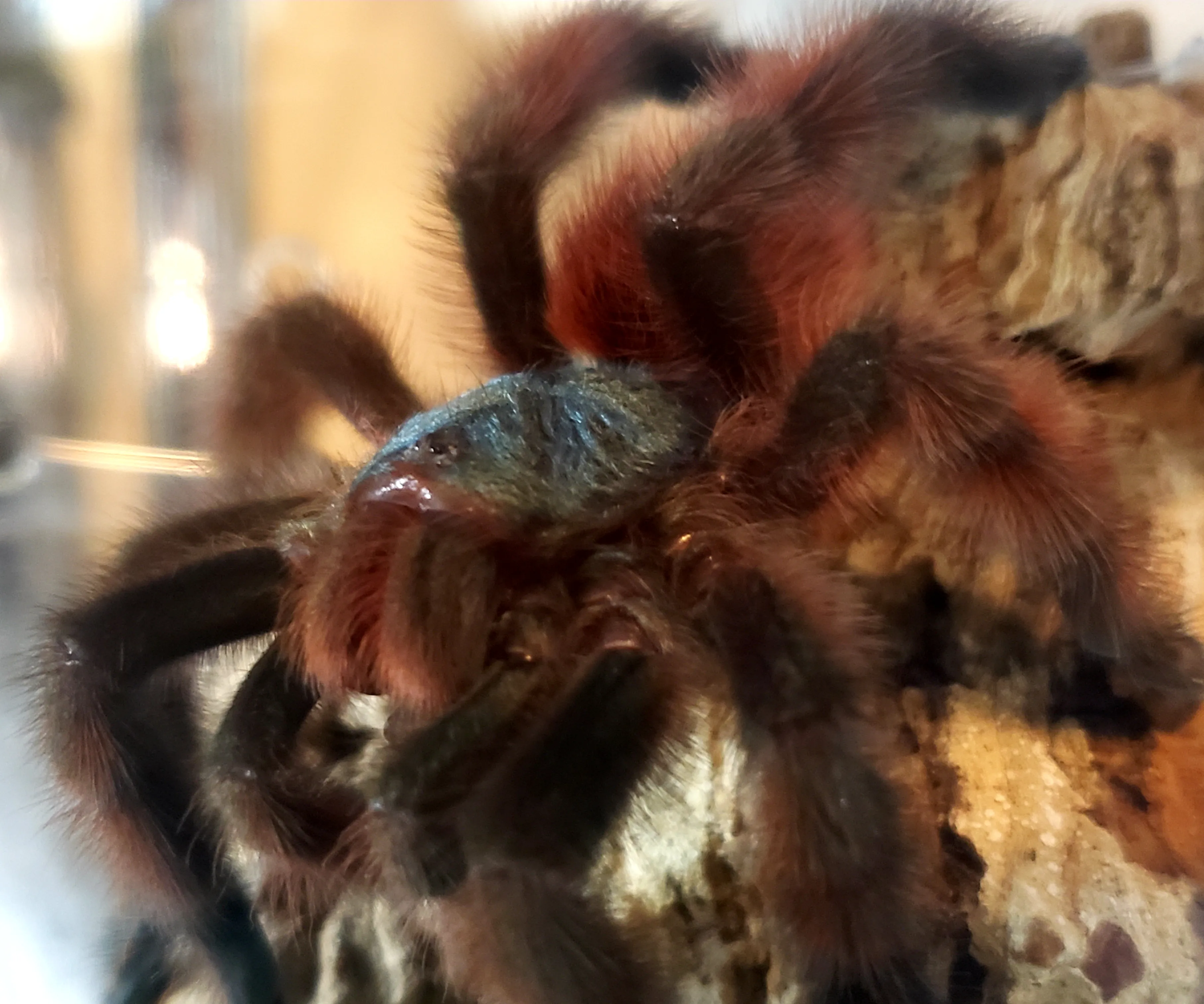
Understanding the lifespan and common health issues of Versicolour Tarantulas is critical for ensuring their well-being. With proper care, these tarantulas can live for many years, providing you with a rewarding experience. Regular observation, a clean environment, and proper diet will all contribute to the tarantula’s health. Any health issues should be addressed promptly to maintain a long and healthy life for your pet tarantula. Keeping your tarantula healthy is a key component of ownership.
Average Lifespan
The average lifespan of a Versicolour Tarantula is between 5 to 12 years for females, while males typically have a shorter lifespan of around 3 to 5 years. The longevity of a tarantula is influenced by several factors, including diet, environmental conditions, and genetics. Providing a high-quality diet, maintaining the correct temperature and humidity, and a stress-free environment will increase the chances of your tarantula living to its full potential. The time you can expect to spend with your spider varies by gender.
Common Health Issues
Common health issues in Versicolour Tarantulas include dehydration, molting problems, and fungal infections. Dehydration can be prevented by providing a consistent supply of fresh water and maintaining appropriate humidity levels. Molting problems, such as difficulty shedding their exoskeleton, can be caused by low humidity or other environmental stressors. Fungal infections can arise from unsanitary conditions. Regular observation of the tarantula for any signs of illness, such as lethargy, loss of appetite, or unusual behavior, is very important. Consulting with a veterinarian experienced with invertebrates can help diagnose and treat any health problems effectively. Monitoring and addressing common health issues will help your pet.
Conclusion Versicolour Tarantula
The Versicolour Tarantula is a beautiful and fascinating species that can make a rewarding pet for those willing to provide the necessary care. By understanding its appearance, natural habitat, and specific care requirements, you can create an environment where your tarantula can thrive. Providing proper enclosure, maintaining the right temperature and humidity, feeding it a balanced diet, and handling it safely are all essential components of responsible ownership. With the knowledge and dedication to provide proper care, you can enjoy many years with this amazing arachnid. The Versicolour Tarantula is a great pet and is very fun to own.
